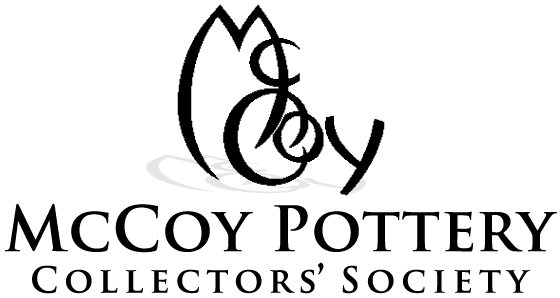By Dewayne Imsand
This guide provides a method to determine whether a particular piece of pottery that purports to be made by the Nelson McCoy Pottery is authentic, or whether it is a fake or a reproduction. There is a detailed discussion, and many pictures, of fakes and reproductions on the following pages within the website.
There are very many fakes and reproductions on the market today. Ebay, for example, has many pieces of pottery on auction every day that are not authentic. When you are looking at a particular piece of pottery that appeals to you, and the seller says it is a McCoy, or says that it is marked “McCoy”, the first question you should ask yourself is, what is the seller trying to do. Obviously, it is to sell the piece, but remember that words are cheap. It is up to you to convince yourself, using more than the seller’s words, that the piece is really an authentic McCoy.
In making your determination you should be aware that there is a big different between the two types of fraudulent pieces. The first is a fake. Fakes are simply pieces that are marked with a certain pottery trademark, but that pottery never made that piece. For example, there exists a Little Red Riding Hood cookie jar, that has the McCoy mark on it, but the Nelson McCoy Pottery never made a Little Red Riding Hood cookie jar. What unscrupulous people do in their attempt to defraud buyers is, select a jar of their choice and make a mold of it, with the original mark removed, if any, and replace it with the McCoy mark. The modified mold results in a cookie jar that has a McCoy mark on it. Some unsuspecting buyers assume that the jar is authentic because it marked McCoy. If you did not know that the Nelson McCoy Pottery never made the jar, you could be tempted to buy it.
The second type of fraudulent piece is a reproduction. A reproduction is a piece that a pottery did originally make. The reproduction looks like the original piece, in both the overall shape and mark. When reproduced pieces have an original looking mark, the intent of the maker is simply to defraud unsuspecting buyers. Although reproductions have the overall shape and mark of an authentic piece, they are always smaller than the authentic piece they appear to be. The reason for this is that reproductions are produced using an authentic piece to make the mold from which the reproductions come. Because clay shrinks when it dries, and shrinks even more when it is “fired” in the kiln, that causes reproductions to be smaller than the original. Reproductions are always smaller and somewhat lighter than the original.
We know that fakes and reproductions are numerous and more are being produced everyday. The problem collectors have is, how to avoid buying these fraudulent pieces. The only way to avoid fakes is to know what pieces of pottery that were actually made by the Nelson McCoy Pottery (or any other pottery of interest). If you find a piece of pottery that is marked “McCoy”, and it is not pictured in any of the McCoy reference books, the chances are that it is a fake. Remember, fakes may have an authentic looking mark on them, but regardless of that, they are fakes.
The way to avoid a reproduction is to measure the longest dimension of a suspect piece, and compare it to the same dimension of an authentic piece. A reproduction is indicated, if the measurement of the suspect piece is six percent, or more, smaller than the same measurement of an authentic piece. For pieces that are on ebay, acquiring the exact height of a vase or the exact length of a planter that is for sale may be difficult. Sellers of fraudulent pieces typically know why you are asking for a measurement, and they usually respond with answers like “almost” or “nearly”. If a seller does not respond to your questions in a satisfactory manner, it would be better to avoid doing business with them. This is especially true if you see other pieces in their listings that you know are reproductions or fakes. There are quite a few ebay sellers that routinely list fakes and reproductions.
The Society web sitegives a list of measurements of authentic pieces that have known to have been reproduced. In addition, the measurements of some authentic pieces are also found in the McCoy reference books.
